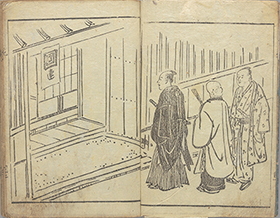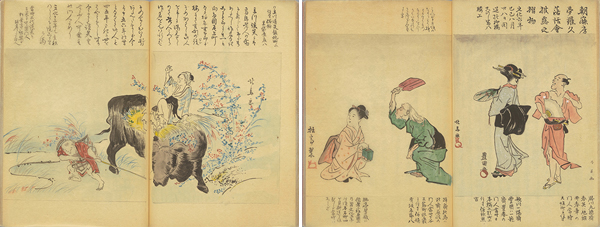Great-Edo Entertainment
Kabuki Special / Grand Sumo Special / Rakugo SpecialThe Roots of Edo Rakugo
Shikano Buzaemon (1649-1699), an artist active during the latter half of the 17th Century, is said to be the founder of Edo Rakugo. Buzaemon gained fame in Edo for his performances of zashiki shikata-banashi: indoor storytelling accompanied by colorful motions and gestures. He was eventually banished from Edo for the controversy which his writing generated, and the Rakugo boom began to wane. For the next 100 years, humorous stories were available in Edo only in written form.
At the end of the 18th Century, Utei Enba (1743-1822) founded Hanashi-no-kai, a coterie where enthusiasts could display their storytelling skills at regular meetings. Enba, also a master carpenter, was a prominent author of popular literature and parodic tanka poetry (kyōka). He often referred to himself as Tatekawa Danshūrō, a reference both to the river Tatekawa in Ai'oichō where he lived, and to Ichikawa Danjūrō V (1741-1806), a Kabuki actor he patronized. Enba named another of his artistic groups Mimasu-ren: also a reference to Ichikawa Danjūrō V, whose family emblem featured a three-square or 'mimasu' pattern. The activities of Hanashi-no-kai and Mimasu-ren were fully integrated. In the meetings of Hanashi-no-kai the literati would gather to present their own original comic stories. These stories were later published, partly for promotional purposes, in comic storybooks such as Kimi Dango (literally "stories of joy and beauty," but also a pun on kibi dango: millet dumplings) and "Otoshi-banashi Word Flowers" (Otoshi-banashi Kotoba-no-hana). These inspired a boom in humorous storytelling in Edo, and led to the appearance of many professional Rakugo performers.
* To view more explanation, please click the each image.



